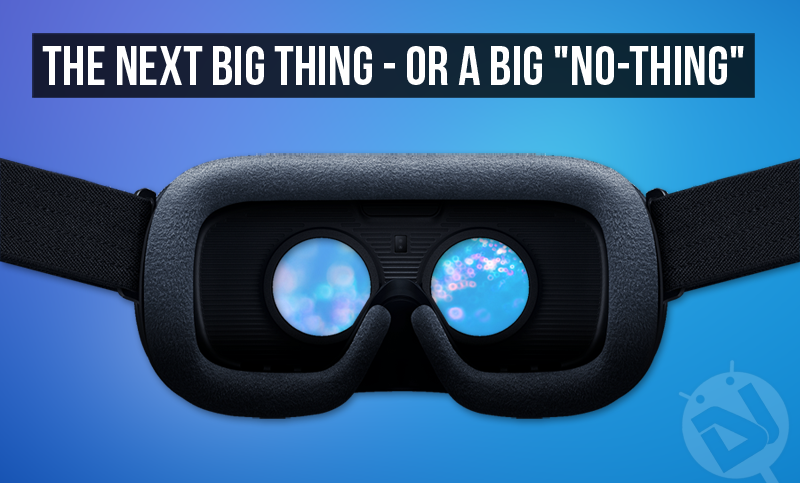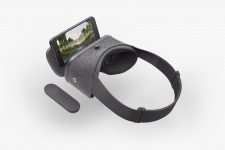
VR, or “virtual reality” is the hot buzzword of late among Android and tech manufacturers, ostensibly, because of its promise as a new, immersive content – consumption paradigm.
Manufacturers, advertisers, retailers, software firms and other creators of content who must constantly vie and compete with rivals in order to dominate the attention of the end user with their wares.
The idea of expanding and enhancing content already being delivered to your Android phone, which is already ubiquitous (iPhone offerings in the VR arena aren’t as developed for differing reasons which I’ll touch on in a future article,) in a totally immersive milieu is what is capturing the imagination of the industry. Everyone already has the main component needed, and the complementary devices can be as cheap as USD15 such as in the case of Google Cardboard.
Also read: Best VR Apps for Google Cardboard That are Worth Getting
To say that the market to control the user’s attention is crowded is perhaps the biggest understatement ever uttered, and SEO, Google, and its competitors do what they can to manipulate the playing field for themselves and their patrons, but I’ll also save my views on that for another time.
So, the idea of dominating, and completely blocking out any and all other possible attempts by alternate suitors to distract you with their offerings by literally putting blinders on the consumer’s head so that they see nothing except what the content – entity puts in front of your eyes must truly curl the toes of big business.
But is VR the consummate consumption device panacea that enterprisers prize in their (Day)dreams?
In theory, yes; in (virtual [cha!]) reality, p e r h a p s not so much.
The essence of VR’s concept were stereoscopes, the first having been invented in the early 19th century, which fell out of favor with the eventual advent of cinema. Baby – boomers will recall the more modern, immersive iteration in the original, analog View-master toy, popular from the1950s through to the ‘70s.
I mention these rudimentary products because the current generation of Android – compatible VR devices (which are binocular HMDs) use the same mechanical principle of stereoscopy, or two slightly offset image – inputs, that when recombined in your brain, give the illusion of depth.
Of course, I’m not talking about the commercial applications of VR. It’s already being developed for medicine and education, and researched for geological and space exploration, to name just a few.
Rather, the application potential of VR for consumer Android content seems almost limitless – enhanced gaming, video, 360 imagery for Maps, advertisement, shopping, pr0n or perhaps some day, Tinder, so you can check out a prospective date’s actual depth.
You may like: Some Secret Codes for Android Phones that You Must Know
As mentioned earlier, the apparatus required for VR consumption can require very little investment, and you already own the phone. This is what excites the marketers.
Additionally, there’s already a proven interest in and the market for enhanced visual content as evidenced by HD display – awareness and the resurgent popularity of 3D cinema, so, naturally, consumers must be champing at the bit for VR! Amiright?
Well, manufacturers of the various VR offerings apparently think so given the marketing and promotion of their VR products.
At the bottom rungs of the Android – compatibles you have Google’s Cardboard and a plethora of generic and low priced VR sets (even View-Master’s back.) Or you can go for higher quality offerings such as Sammy’s Gear VR or Google’s Daydream. Of course, there’s the ultra – expensive, self – contained marques such as Oculus or HTC Vive.
But they all essentially do the same thing – deliver content in an enhanced, immersive experience.
And therein lies the rub and why I believe that VR’s appeal will never penetrate the consumer market in a significant way:
Contrary to some old people’s and technophobe’s opinions, technology is very often a shared and socially – enabling experience. From communicating with friends, established, new, IRL or online – only, to meeting and discussing shared experiences about technological things, or games, or videos or articles, people want to connect with other people. That’s what technology does and does so in a magnitude of scale never before in human history.
VR, except maybe in instances of multiplayer games, immerses – by definition – the wearer into complete isolation!
Further, while in the isolated state, cut off from communication with friends in situations other than hearing their reactions to you being in the “blindfolded” state, there is little else for your companions to do other than sit there and watch you while you’re watching… something. But they know not what. It’s ridiculous and antithetical to the types of group or small group interactions I referenced before of shared experience.
We love watching gamers playing games and can share in their drama, triumphs, defeats as well as the action of the screen. Someone “immersed,” we see nothing except a person wearing HMD, flailing around at invisible foes or obstacles!
Don’t miss: Google Daydream VR App Development now Accessible to Everyone
I think that VR will never gain widespread – acceptance beyond hardcore Android enthusiasts, nor the market – penetration that corporations had hoped for these primary reasons.
Speaking personally, I sold my Daydream VR set that I got free with my Pixel XL after a couple of day’s worth of use. I didn’t want more content; I just didn’t like having them strapped to my head, messing up my hair and being sensorily isolated.
And lastly, if you are among peers and you’re wearing VR apparatus, there’s always the clear and present danger that one of your chums will punch you in the stomach while you’re blindfolded and vulnerable


Join The Discussion: